LAFIA HUB UPDATE
In December 2015 women parboilers were educated on how to form group,s so as to enhance quality rice packaging and marketing around , lafia hub. Since it is noticed that women plays a vital role in rice processing in the hub. During this programme Dr Mrs Ojehomoh play a vital role in educating the women as the focal person in-charge of gender in the hub. Other focal persons were also represented. A visit to the hub rice processing center where all the equipment needed for processing was done to ascertain the group formation by the female perboilersDuring the meeting, the hub coordinator gave his remarks and advice on how to make the hub remain a hub of promise.
Jacinta Otene as one of the Facilitator who gave advice on how the formation of the group can be a help in terms of increased productivity and performance, skill development and knowing more about oneself. Formation of the groups will also be a benefit in terms of access to modern technology, loans and capacity building.
In 2016, training the trainers capacity building was organized by AfricanRice to train the par boilers key personnel’s on modern way of rice parboiling. This training was conducted in 2 batches, where training the trainer for a month, and the trainer trains others for two month. This training started in the month of June 2016 to extend through September 2016. The training is to facilitate familiarization and with the technical know-how of modern rice parboiling system and continues usage of the technology.
The training modules as below including the pictures
GEM TECHNOLOGY IN NASARAWA/BENUE HUB(TRAINING THE TRAINERS).
INTRODUCTION: GEM (Grain quality enhancer, Energy efficient and durable Material) parboiling technology is an improved parboiling technology initiated by AfricaRice in collaboration with National Cereals Research Institute Badeggi(NCRI) and National Agricultural Development Programme(NADP) for increase quantity and quality parboiled rice in Nigeria. GEM Technology was installed in Nasarawa/Benue hub in April 2016.Training on how to operate it started on May 2016. and handed to the innovation platform in order to ensure ownership.
DEFINITION OF TERMS
1. INNOVATION: Is defined simply as a new ideas, devices or method. Is often also view as the application of better solution that meet new requirement and existing market needs, or something that bring positive change.
2. INNOVATION PLATFORM (I P RICE): Is the coming together of different actors in the rice value chain in order to achieve a common goal. IP help to identify problems provide solution, locate needs and opportunities through networking and knowledge sharing.
3. PURPOSE AND VISION OF IP. Coming together of different rice actors to improve quality rice, increase rice production and improve better livelihoods.
4. WHO IS INVOLVED IN THE RICE INNOVATION PLATFORM? Those involved are: -
a. Input supplier
b. Seed producers
c. Grain producers
d. Rice parboilers
e. Rice millers
f. Traders
g. Transporters
h. Wheelbarrow Pushers
i. Brokers (Middle men)
j. Bank/Microfinance
k. Extensions
i. Researchers
m. NGOs
n. Policy makers
o. Shade owners
p. Firewood cutter
q. Firewood sellers
r. Charcoal sellers
s. Rice grain gleaner
t. Local media
u. Equipment supplier/maintainers
v. Dryers
w. Consumer
CONSEDERING THE RICE QUALITY IN NASARAWA STATE /NIGERIA
Preferred quality factors are related to grain length, stickiness, aroma, flavor and nutritional content. The end users i.e consumers and buyer decides the quality they want. In Nigeria, there is standard for quality that have been set and followed by both the buyer and consumers.
PREFERRED PHYSICAL CHARACTERISTICS: These includes:-
i. Whole and broken grains
ii. Shape and size of the grains
iii. Color of the grains
iv. Weight of the grains.
v. Foreign materials like dirt, stones etc
vi. Moisture content of the grains
NB: Long grain rice is most preferred because; it does not stick together when cooked but tends to remain separate and fluffy. The recommended rice variety available that meets the standard set above in Nasarawa state are FARO 44 and FARO 52 with long grain excluding local varieties.
PARAMETERS USED FOR IDENTIFYING QUALITY GRAIN /PADDY
i. Moisture Content (M.C 12 - 14%): High moisture content directly reduces rice quality, the grain molds with effect of the microbial activities that have taken place or spoil, the quality becomes lower after milling. It is advisable to work closely with moisture meter for moisture determination before storage and milling.
ii. Purity(95%) : Impurities and foreign materials (all materials other than true type paddy are called foreign materials or impurities).These include soil, stones, weed seeds, fragments of rice stalk, dust, husk and dead insects. The present of impurities and foreign matterials could result to grain deterioration in storage. It also affects the quality of milled rice and accelerates the wear and tear of the milling machine.
iii. Mature Grains: Immature grains have a husk weight ranging from 30 – 40% less than true grain weight. Hence the presence of excessive amount of immature grains/unfilled grains in paddy lowers milling recovery and increases the husk production. Furthermore, immature grains are predominantly brittle (breaking easily) in the process of hulling and polishing, thus reducing total milling output.
IMPORTANCE OF RICE PARBOILING
i. Parboiled rice has more fiber than parboiled rice.
ii. Parboiled rice is a better source of fiber, calcium, potassium and vitamin B6 than parboiled.
iii. Diabetic patient can consume parboiled rice because of its low starch content.
ADVANTAGE OF RICE PARBOILING
i. During milling: a. De-husking is easier with less cost incurred
b. Fewer broken grains
c. High milling output is obtained.
ii. During storage: More resistance to insect attack.
iii. During cooking: a. Losses less starch
b. It does not stick together
c. It swells up
d. It has good taste
e. It can be served as white rice, jollof and ‘tuwo Shinkafa’.as prefferd.
DIFFERENT SECTIONS OF PARBOILING GEM TECHNOLOGY INSTALLED IN NASARAWA/BENUE HUB:
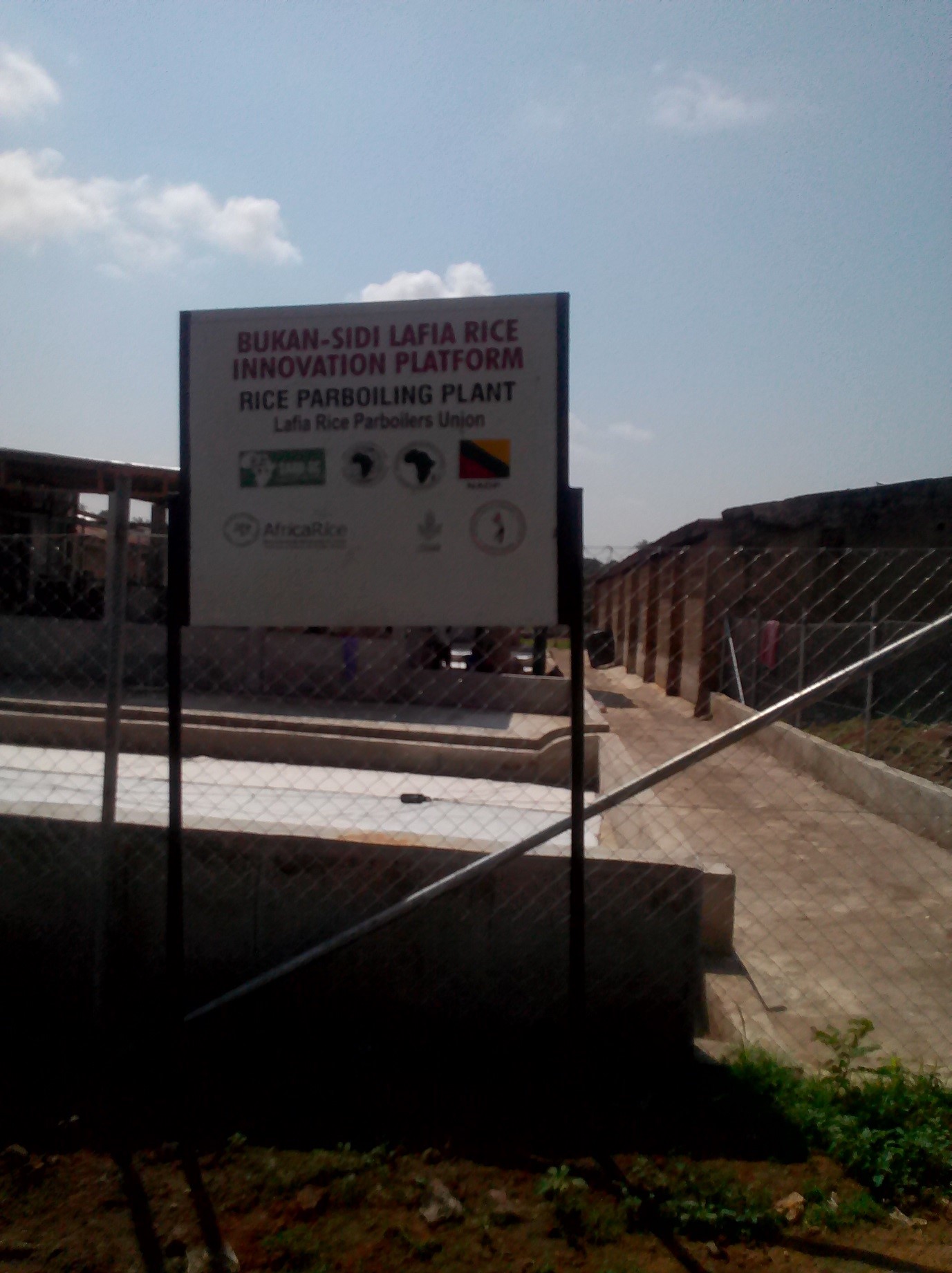
1. BOREHOLE
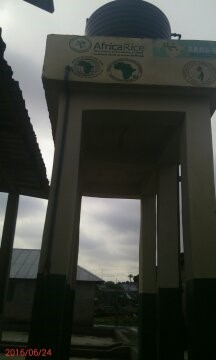
Parboiling activities entails the use of water in high volume, in view of this borehole with two over head tanks has been put to place.
2. WASHING AREA
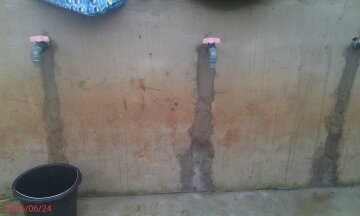
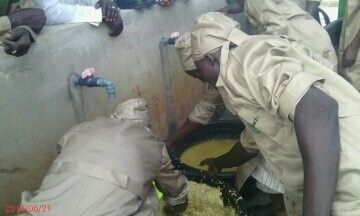
Three pipe water channels was put in place where paddy is washed, cleaned before soaking. In the washing areas three 3 bowls is required simultaneously for effective and thorough washing.
3. SOAKING TANK
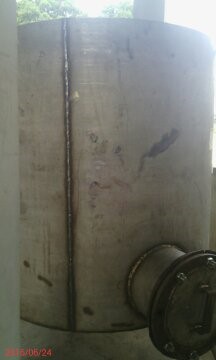
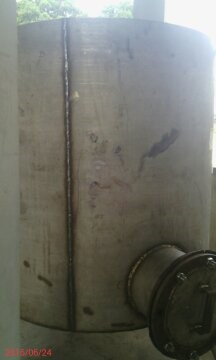
After paddy is thoroughly washed it transfer to soaking tank, the soaking tank contained two chambers 1. Water holding chamber and 2. Paddy holding chamber. There are two soaking chamber with capacity of 700kg each, give a total of 1.4 tons. The paddy is soaked with hot water for 16 hours, normally from 5pm -8 or 9 am Then Water will be evacuated before steaming.
4. PARBOILING TANK
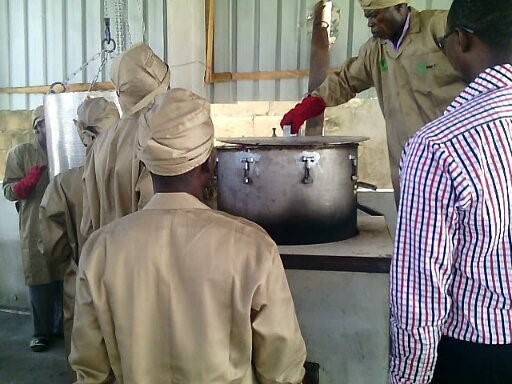
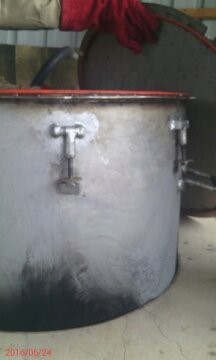
This tank boils water for soaking and steaming with different water level for each activity. Boiling tank has ring at the base where steaming vessel relax on during steaming. Boiling water for soaking, the water level should almost full it has cover with side screw nut and one screw nut on top the cover for tightening. When the water is boiled, it will be transferred to the soaking tank by the help of a manual pump. Boiling water for steaming, the water level will not reach the ring mark of the boiling tank while the steaming vessel seat on for steaming process.
5. STOVE
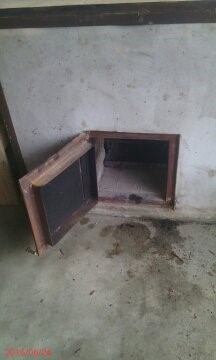
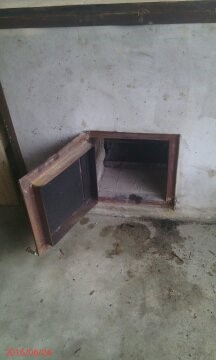
Two 2 stove were build with burn brick and cement as a source of fire for boiling water for soaking and steaming with little firewood quantity. If the fire is set it takes the stove 3o minutes to gather combustion, after 30 minutes the stove start to emit heat.
6. STEAMING VESSEL
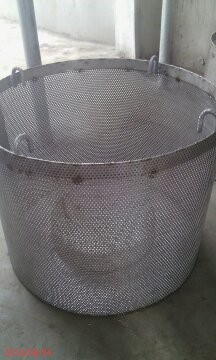
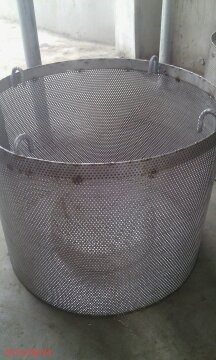
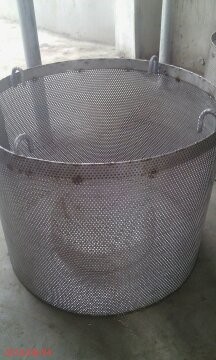
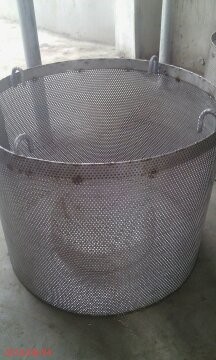
Four steaming vessel were constructed for paddy steaming. After the rice has been washed and soaked ,the water was evacuated, transfer the rice to steaming vessel by using plastic bucket, thereafter lifted up by chain ray to the parboiling tank in the stove with little volume of water at the bottom. After the steaming vessel is set and cover properly, it take 25 minute to get steam, after 9 minute the pot will start to make sound. After 25 minutes the nut on the top cover will be untie, follow by the nut at the side. This is done to release heat from the pot, if this is done open the cover and use the chain ray to carry it to the drying slap, allow it for 5 minute before drying (especially the first steaming). Dry paddy to the moisture content of 14% for milling and 12% for long storage. Always wear hand glove when handle hot pot and stove.
7. PUMP
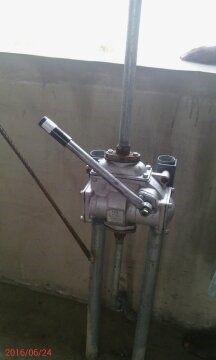
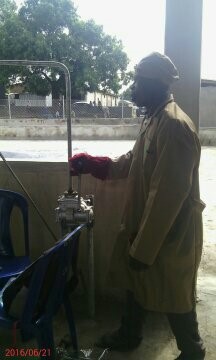
This pump hot water manually for soaking and pump cold water for washing steam paddy, it is easier to pump, pump until the water is above the paddy level during soaking.
8. CHAIN RAY
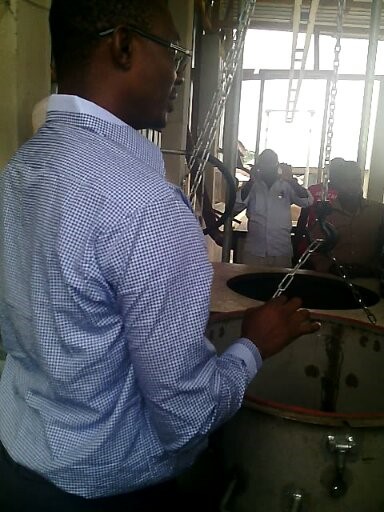
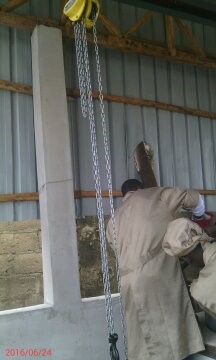
This is used to carry boiling tank and steaming vessel to the stove and from stove to the drying slap without stress.(An advance technology to avoid heat stress/shock)
9. DRYING SLAP
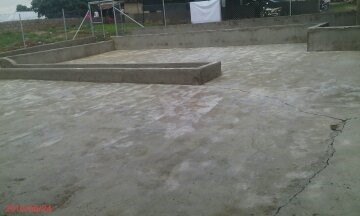
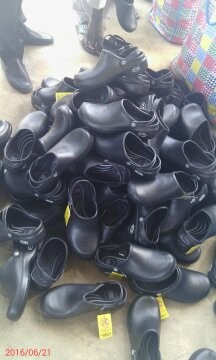
This is where steaming paddy is being dried; the drying process is by using trampoline. To keep the drying slap clean and free of stone ,with a special shoes to walk on it.
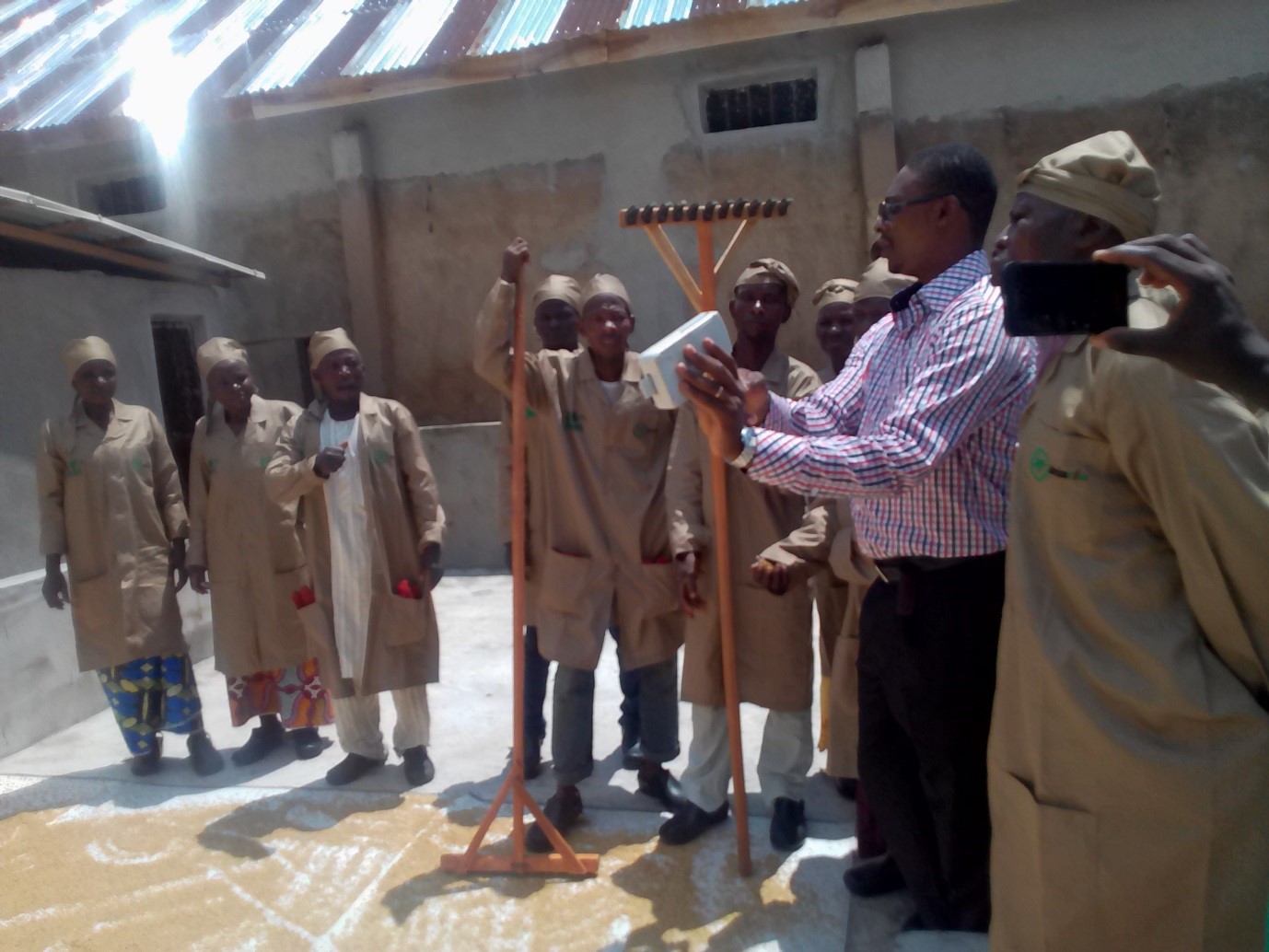
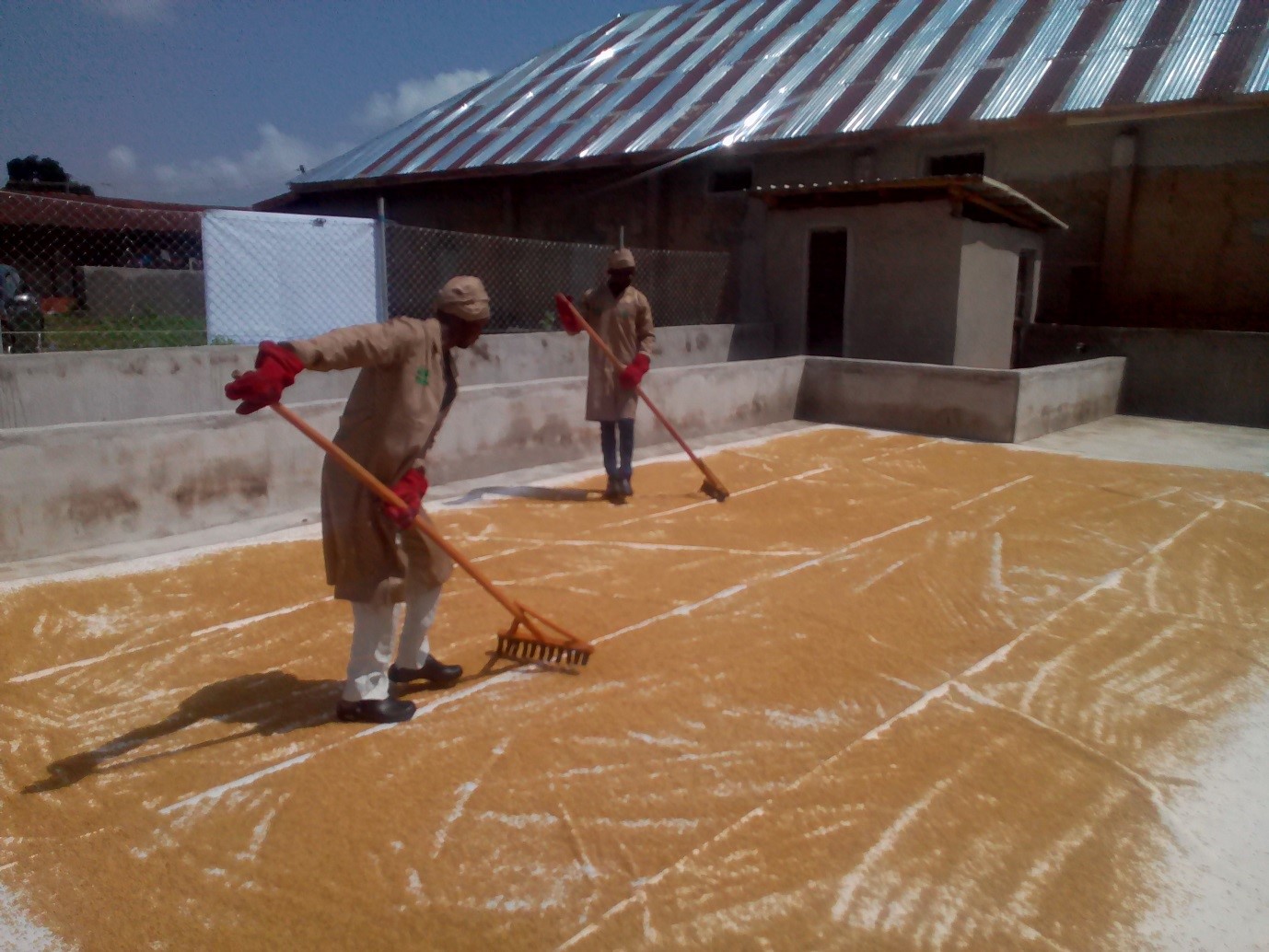
PICTURES SHOWING THE PARTICIPANT DURING TRAINING SECTION



















